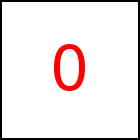UV Mapping
If the 3D Model contains a material named "HTML" as discussed
in HTML Material and in addition texture
coordinates (UV Coordinates) then taccgl™ uses these for mapping
the HTML element on the surfaces of the 3D model. This only
works for surfaces of material "HTML", UV coordinates of all other
surfaces are currently ignored.
For example this scene contains a
sphere of material HTML. The
following examples show this scene. It is associated with an
hidden HTML element named "pinned", which is subsequently mapped
on the Plane.
Pinned Element
var to=taccgl.objFile().read('/objtest/uvsphere1.obj',false); var a=taccgl.a("Layout",to.objs("Sphere")).paint() .modFit("mmb","xy").dur(5).start(); | RUN |
var to=taccgl.objFile().read('/objtest/uvsphere1.obj',false); var a=taccgl.actor("Layout",to.objs("Sphere")) .modFit("mmm","xy").rotateMiddle(0,0.7,0.7).dur(5).start(); | RUN |
var to=taccgl.objFile().read('/objtest/uvsphere1.obj',false); var a=taccgl.a("ex4",to.objs("Sphere")).mapActor("Layout") .modFit("mmm","xy"). to(0,0,-2000).rotateMiddle(0,0.7,0.7).dur(5).start(); | RUN |
All the methods used for coloring and texturing
like color, blend, mapActor etc.
become operational now and apply to the surfaces with HTML material.
All other surfaces of the 3D Model keep colors and textures as defined
in the 3D Model.
WebGL™ is a trademark of the Khronos Group Inc.
| 




